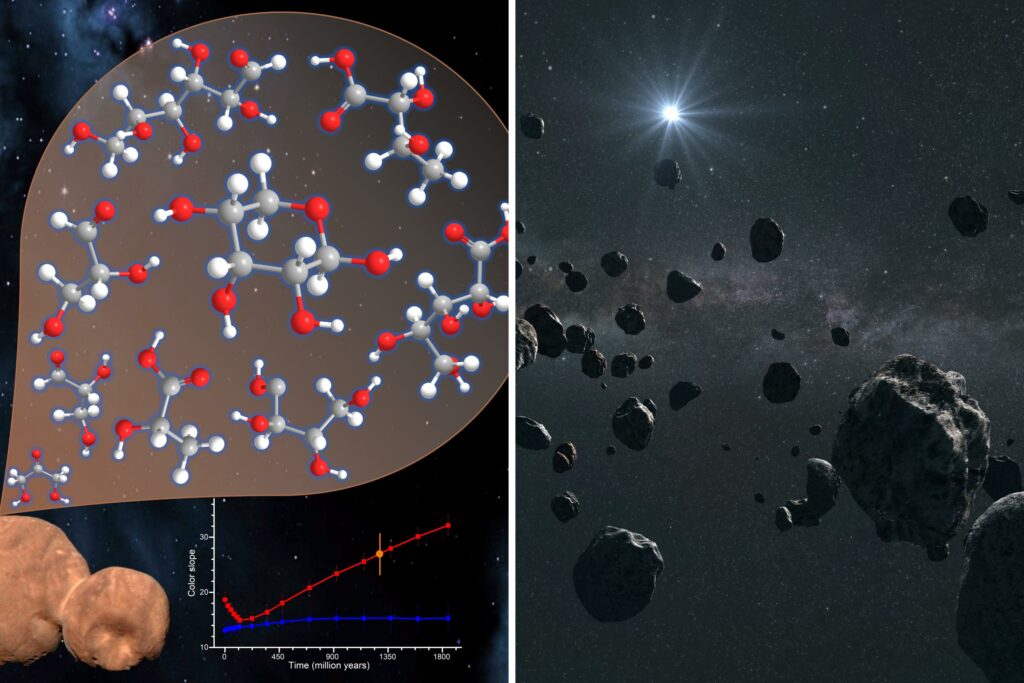A recently discovery ‘Sugar World’ has been found approximately 4 billion miles away from Earth within the Kuiper Belt.
From a study, there is a far-off object in the Kuiper Belt, and this object is known as Arrokoth or otherwise as the “Sugar World” since this object comprises a great amount of organic molecules, which are the complex sugars.
The Southwest Research Institute planetary scientist Alan Stern and his team conducted the research and the details can be found in the PNAS journal. The study provides new knowledge about Chemical Evolutions that took place in the early solar system and possibly on the young Earth.
Arrokoth also known by the previous names of Ultima Thule and 2014 MU69 is the most distant object through which a spacecraft has ever been launched. The New Horizons mission, that accomplished the incredible work of capturing images of Pluto, flew past Arrokoth on January 1, 2019. The object the mission visited is located in the Kuiper belt, an area of frigid, icy bodies beyond Neptune, about four billion miles from Earth, and the details of the object were well depicted in the mission’s photos and data.

“We set a record! This is the first time a spacecraft is visiting such a distant object. I mean, just imagine, if we are a billion miles beyond Pluto and now we going to the Kuiper Belt,” he said at that time, Space. com reported.
More aboard are complicated different molecules, and this is related to its reddish color recognized by researchers analyzing flyby data. These molecules include other forms of carbon-containing substances, water ice and methanol.
When specific methanol ices were placed on Arrokoth and subjected to cosmic rays, several organic molecules formed including some of the building blocks of life such as the sugary alcohols, ribose and glucose. These outcomes indicate that Arrokoth’s surface has experienced a higher level of chemical transformation, in which the raw molecules are converted into compound forms through a process that may take billions of years.
These key molecules are important in understanding the chemical processes that might have possibly initiated life in the first place on planet Earth.
In this October statement, Will Grundy, a co-author of the study mentioned: To observe this object and see its shape so well preserved that the order of assembly of the components mapped directly to aspects of the material thus characterised by being built from a set of blocks of similar kind, is amazing.
Denser compared to the object itself or to a differentiated body, the mounds on Arrokoth ’s surface are believed to have been made of some of the first blocks from which it was formed. These characteristics afford invaluable clues as to the conditions or processes prevalent in this part of the early solar system.
“If the mounds are indeed representative of the building blocks of ancient planetesimals like Arrokoth, then planetesimal formation models will need to explain the preferred size for these building blocks,” Stern said in his statement.
We are still receiving data from the New Horizons mission that may improve our comprehension of the Kuiper Belt and its objects. We anticipate that the spacecraft will investigate more targets in the Kuiper Belt, which will increase our understanding of the early solar system.
Stern said to Space.com, “It would be foolish not to search for another target.”
Do not forget to share your opinion with us to provide you with the best posts !




0 Comments